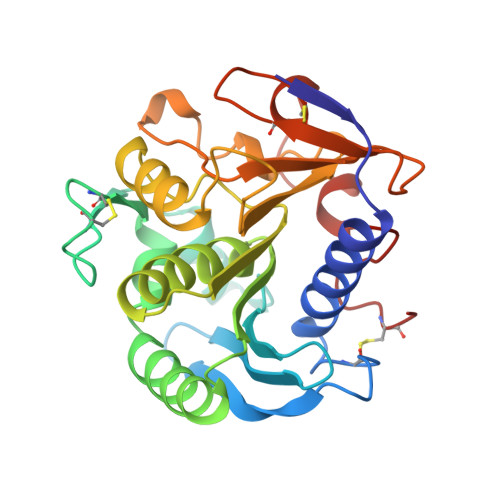Respective Importance of Protein Folding and Glycosylation in the Thermal Stability of Recombinant Feruloyl Esterase A.
Benoit, I., Asther, M., Sulzenbacher, G., Record, E., Marmuse, L., Parsiegla, G., Gimbert, I., Asther, M., Bignon, C.(2006) FEBS Lett 580: 5815
- PubMed: 17027758
- DOI: https://doi.org/10.1016/j.febslet.2006.09.039
- Primary Citation of Related Structures:
2HL6, 2IX9 - PubMed Abstract:
The thermal stability of four molecular forms (native, refolded, glycosylated, non-glycosylated) of feruloyl esterase A (FAEA) was studied. From the most to the least thermo-resistant, the four molecular species ranked as follows: (i) glycosylated form produced native, (ii) non-glycosylated form produced native, (iii) non-glycosylated form produced as inclusion bodies and refolded, and (iv) glycosylated form produced native chemically denatured and then refolded. On the basis of these results and of crystal structure data, we discuss the respective importance of protein folding and glycosylation in the thermal stability of recombinant FAEA.
Organizational Affiliation:
UMR 1163 INRA/Universités de Provence et de la Méditerranée, Unité de Biotechnologie des Champignons Filamenteux, IFR86-BAIM, ESIL, 163 avenue de Luminy CP 925, 13288 MARSEILLE cedex 09, France.

















